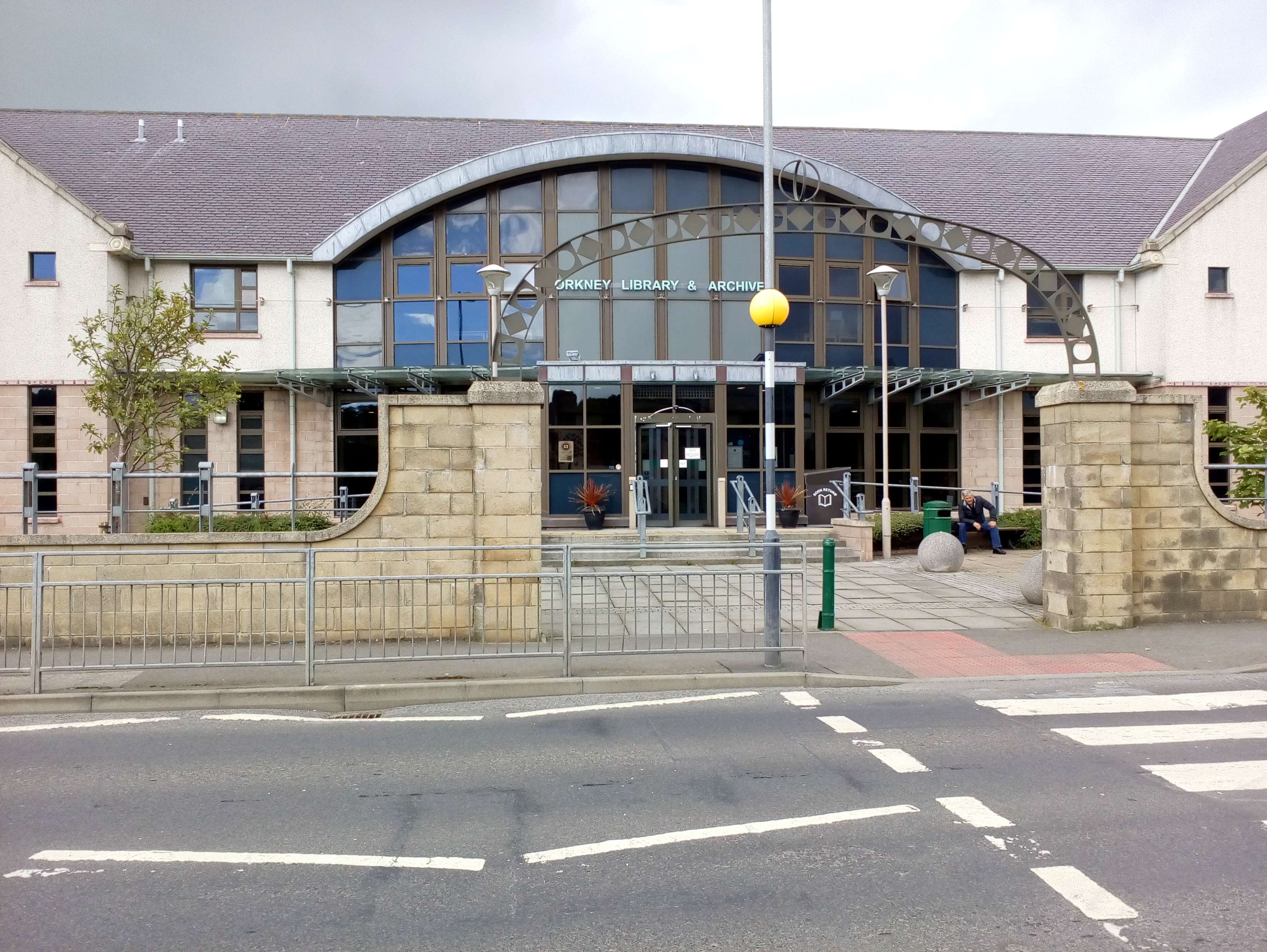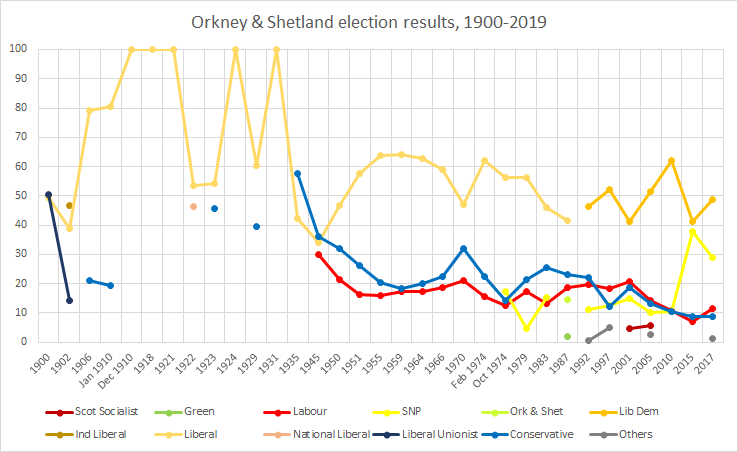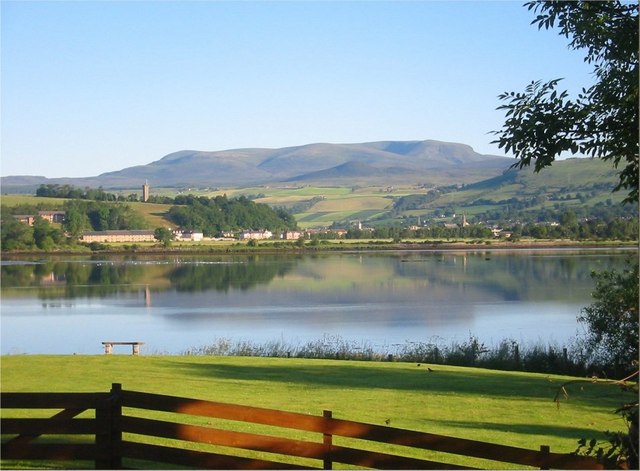|
Kirkwall
Kirkwall ( sco, Kirkwaa, gd, Bàgh na h-Eaglaise, nrn, Kirkavå) is the largest town in Orkney, an archipelago to the north of mainland Scotland. The name Kirkwall comes from the Norse name (''Church Bay''), which later changed to ''Kirkvoe'', ''Kirkwaa'' and ''Kirkwall''. Kirkwall was formerly the site of an ancient Norse town founded approximately 1000 years ago. Today, it is a transport hub with ferries to many locations. History The town was first mentioned in in the year 1046, when it was recorded as the residence of , the Earl of Orkney, who was killed by his uncle Thorfinn the Mighty. In 1486, King James III of Scotland elevated Kirkwall to the status of a royal burgh. On the western edge of the town, surrounded by Hatston Industrial Estate, there is a prehistoric monument, known as the "Grain Earth House" (see Historic Scotland). It is a short, low, stone-walled passage, deep underground, leading to a small pillared chamber. This kind of earth house (or "souterrai ... [...More Info...] [...Related Items...] OR: [Wikipedia] [Google] [Baidu] |
Orkney
Orkney (; sco, Orkney; on, Orkneyjar; nrn, Orknøjar), also known as the Orkney Islands, is an archipelago in the Northern Isles of Scotland, situated off the north coast of the island of Great Britain. Orkney is 10 miles (16 km) north of the coast of Caithness and has about 70 islands, of which 20 are inhabited. The largest island, the Mainland, Orkney, Mainland, has an area of , making it the List of islands of Scotland, sixth-largest Scottish island and the List of islands of the British Isles, tenth-largest island in the British Isles. Orkney’s largest settlement, and also its administrative centre, is Kirkwall. Orkney is one of the 32 Subdivisions of Scotland, council areas of Scotland, as well as a Orkney (Scottish Parliament constituency), constituency of the Scottish Parliament, a Lieutenancy areas of Scotland, lieutenancy area, and an counties of Scotland, historic county. The local council is Orkney Islands Council, one of only three councils in Scotland with ... [...More Info...] [...Related Items...] OR: [Wikipedia] [Google] [Baidu] |
Tain Burghs (UK Parliament Constituency)
Tain Burghs, was a constituency of the House of Commons of the Parliament of Great Britain from 1708 to 1801 and of the Parliament of the United Kingdom from 1801 to 1832, sometimes known as Northern Burghs. It was represented by one Member of Parliament (MP). Creation The British parliamentary constituency was created in 1708 following the Acts of Union, 1707 and replaced the former Parliament of Scotland burgh constituencies of Tain, Dingwall, Dornoch, Kirkwall and Wick which had all been separately represented with one commissioner each in the former Parliament of Scotland. In 1707-08, members of the 1702-1707 Parliament of Scotland were co-opted to serve in the first Parliament of Great Britain. See Scottish representatives to the 1st Parliament of Great Britain, for further details. Boundaries The constituency was a district of burghs representing the Royal burghs of Dingwall, Dornoch, Kirkwall, Tain and Wick. In 1832 the constituency was replaced by Wick Burghs and ... [...More Info...] [...Related Items...] OR: [Wikipedia] [Google] [Baidu] |
Northern Isles
The Northern Isles ( sco, Northren Isles; gd, Na h-Eileanan a Tuath; non, Norðreyjar; nrn, Nordøjar) are a pair of archipelagos off the north coast of mainland Scotland, comprising Orkney and Shetland. They are part of Scotland, as are the Hebrides. The climate is cool and temperate and much influenced by the surrounding seas. There are a total of 36 inhabited islands. The landscapes of the fertile agricultural islands of Orkney contrast with the more rugged Shetland islands to the north, where the economy is more dependent on fishing and on the oil wealth of the surrounding seas. Both island groups have a developing renewable energy industry. Both have a Picts, Pictish and Norse activity in the British Isles, Norse history. Both were part of the Norway, Kingdom of Norway until they were absorbed into the Kingdom of Scotland in the 15th century. They remained part of it until the 1707 formation of the Kingdom of Great Britain and the 1801 formation of the United Kingdom. ... [...More Info...] [...Related Items...] OR: [Wikipedia] [Google] [Baidu] |
Earl Of Orkney
Earl of Orkney, historically Jarl of Orkney, is a title of nobility encompassing the archipelagoes of Orkney and Shetland, which comprise the Northern Isles of Scotland. Originally founded by Norse invaders, the status of the rulers of the Northern Isles as Norwegian vassals was formalised in 1195. Although the Old Norse term ''jarl'' is etymologically related to "earl", and the jarls were succeeded by earls in the late 15th century, a Norwegian ''jarl'' is not the same thing. In the Norse context the distinction between jarls and kings did not become significant until the late 11th century and the early jarls would therefore have had considerable independence of action until that time. The position of Jarl of Orkney was eventually the most senior rank in medieval Norway except for the king himself. The jarls were periodically subject to the kings of Alba for those parts of their territory in what is now mainland Scotland (i.e. Caithness and Sutherland). In 1232, a Scottish dyna ... [...More Info...] [...Related Items...] OR: [Wikipedia] [Google] [Baidu] |
Orkney (Scottish Parliament Constituency)
Orkney is a constituency of the Scottish Parliament ( Holyrood) covering the council area of Orkney. It elects one Member of the Scottish Parliament (MSP) by the first past the post method of election. It is also one of eight constituencies in the Highlands and Islands electoral region, which elects seven additional members, in addition to the eight constituency MSPs, to produce a form of proportional representation for the region as a whole. Orkney has been held by the Liberal Democrats at all elections since the formation of the Scottish Parliament in 1999, with the current MSP being Liam McArthur, who won the seat at the 2007 Scottish Parliament election. The former Deputy First Minister Jim Wallace represented the constituency from 1999 to 2007. Electoral region Orkney is part of the Highlands and Islands electoral region; the other seven constituencies of are Argyll and Bute, Caithness, Sutherland and Ross, Inverness and Nairn, Moray, Na h-Eileanan an Iar, Shet ... [...More Info...] [...Related Items...] OR: [Wikipedia] [Google] [Baidu] |
Wick (Caithness)
Wick ( gd, Inbhir Ùige (IPA:[ˈinivɪɾʲˈuːkʲə]), sco, Week) is a town and royal burgh in Caithness, in the far north of Scotland. The town straddles the River Wick and extends along both sides of Wick Bay. "Wick Locality" had a population of 6,954 at the time of the United Kingdom Census 2011, 2011 census, a decrease of 3.8% from 2001. Pulteneytown, which was developed on the south side of the river by the British Fisheries Society during the 19th century, was officially merged into the burgh in 1902. Elzy was described as on the coast a couple of miles east of Wick in 1836. The town is on the main road (the A99 road (Great Britain), A99–A9 road (Great Britain), A9 road) linking John o' Groats with southern Great Britain, Britain. The Far North Line, Far North railway line links Wick railway station with southern Scotland and with Thurso, the other burgh of Caithness. Wick Airport is on Wick's northern outskirts. The airport has two usable runways. A third is derelict. ... [...More Info...] [...Related Items...] OR: [Wikipedia] [Google] [Baidu] |
Thorfinn The Mighty
Thorfinn Sigurdsson (1009?– 1065), also known as Thorfinn the Mighty (Old Norse: ''Þorfinnr inn riki''), was an 11th-century Jarl of Orkney. He was the youngest of five sons of Jarl Sigurd Hlodvirsson and the only one resulting from Sigurd's marriage to a daughter of Malcolm II of Scotland. He ruled alone as jarl for about a third of the time that he held the title and jointly with one or more of his brothers or with his nephew Rögnvald Brusason for the remainder. Thorfinn married Ingibiorg Finnsdottir, daughter of Finn Arnesson, Jarl of Halland. The ''Heimskringla'' of Icelandic historian Snorri Sturluson, and the anonymous compiler of the '' Orkneyinga Saga'' wrote that Thorfinn was the most powerful of all the jarls of Orkney and that he ruled substantial territories beyond the Northern Isles. A sizeable part of the latter saga's account concerns his wars with a "King of Scots" named Karl Hundason whose identity is uncertain. In his later years he went on a pilgrimag ... [...More Info...] [...Related Items...] OR: [Wikipedia] [Google] [Baidu] |
Wick Burghs (UK Parliament Constituency)
Wick Burghs, sometimes known as Northern Burghs, was a constituency of the House of Commons of the Parliament of the United Kingdom from 1832 to 1918. It elected one Member of Parliament (MP) by the first past the post voting system. A similar constituency had been known as Tain Burghs from 1708 to 1832. Boundaries The constituency was a district of burghs representing the parliamentary burghs of Cromarty, Dingwall, Dornoch, Kirkwall, Tain and Wick. Apart from Cromarty, these burghs had been previously components of Tain Burghs. In 1918 Dornoch and Wick were merged into Caithness and Sutherland, Kirkwall into Orkney and Shetland and Cromarty, Dingwall and Tain into Ross and Cromarty.Representation of the People Act 1918, Ninth Schedule - Parliamentary Counties, Scotland The first election in Wick Burghs was in 1832. The franchise was extended to wider groups of the population than under the old system of burgh councillors electing a burgh commissioner to participate in the ele ... [...More Info...] [...Related Items...] OR: [Wikipedia] [Google] [Baidu] |
Orkney And Shetland (UK Parliament Constituency)
Orkney and Shetland is a constituency of the House of Commons of the Parliament of the United Kingdom. It elects one Member of Parliament (MP) by the first past the post system of election. In the Scottish Parliament, Orkney and Shetland are separate constituencies. The constituency was historically known as Orkney and Zetland (an alternative name for Shetland). In the 2014 Scottish independence referendum, 65.4% of the constituency's electors voted for Scotland to stay part of the United Kingdom. Creation The British parliamentary constituency was created in 1708 following the Acts of Union, 1707 and replaced the former Parliament of Scotland shire constituency of Orkney & Zetland. Boundaries The constituency is made up of the two northernmost island groups of Scotland, Orkney and Shetland. A constituency of this name has existed continuously since 1708. However, before 1918 the town of Kirkwall (the capital of Orkney) formed part of the Northern Burghs constituency. It i ... [...More Info...] [...Related Items...] OR: [Wikipedia] [Google] [Baidu] |
District Of Burghs
The Act of Union 1707 and pre-Union Scottish legislation provided for 14 Members of Parliament (MPs) from Scotland to be elected from districts of burghs. All the parliamentary burghs ( burghs represented in the pre-Union Parliament of Scotland) were assigned to a district, except for Edinburgh which had an MP to itself. The burghs in a district were not necessarily adjacent or even close together. Until 1832 the Council of each burgh in a district elected a commissioner, who had one vote for the MP. The commissioner from the Returning Burgh (which function rotated amongst the burghs in successive elections) had an additional casting vote if the numbers were equal. The Scottish Reform Act 1832 amended the composition of the districts, and the boundaries of a burgh for parliamentary purposes ceased to be necessarily those of the burgh for other purposes. The franchise was extended, and votes from all the burghs were added together. There were further changes to the number and ... [...More Info...] [...Related Items...] OR: [Wikipedia] [Google] [Baidu] |
Dingwall
Dingwall ( sco, Dingwal, gd, Inbhir Pheofharain ) is a town and a royal burgh in the Highland council area of Scotland. It has a population of 5,491. It was an east-coast harbour that now lies inland. Dingwall Castle was once the biggest castle north of Stirling. On the town's present-day outskirts lies Tulloch Castle, parts of which may date back to the 12th century. In 1411 the Battle of Dingwall is said to have taken place between the Clan Mackay and the Clan Donald. History Its name, derived from the Scandinavian (field or meeting-place of the ''thing'', or local assembly; compare Tynwald, Tingwall, Thingwall in the British Isles alone, plus many others across northern Europe), preserves the Viking connections of the town; Gaels call it (), meaning "the mouth of the Peffery" or meaning "cabbage town". The site of the , and of the medieval Moothill, thought to have been established by the Vikings after they invaded in the 8th century, lies beneath the Cromartie memor ... [...More Info...] [...Related Items...] OR: [Wikipedia] [Google] [Baidu] |
Dornoch
Dornoch (; gd, Dòrnach ; sco, Dornach) is a town, seaside resort, parish and former royal burgh in the county of Sutherland in the Highlands of Scotland. It lies on the north shore of the Dornoch Firth, near to where it opens into the Moray Firth to the east. The town is within the Highland local government council area. The town is near the A9 road, to which it is linked by the A949 and the B9168. The town also has a grass air strip suitable for small aircraft and helicopters. History The name 'Dornoch' is derived from the Gaelic for 'pebbly place', suggesting that the area contained pebbles the size of a fist (''dorn'') which could therefore be used as weapons. Archaeological excavations during the development of a new business park in 1997 revealed a building, evidence for ironworking and part of a whale, dating from 8th through the 11th centuries AD. The archaeologists surmised that the findings are of an industrial area on the edge of a settlement and that a settlem ... [...More Info...] [...Related Items...] OR: [Wikipedia] [Google] [Baidu] |






.jpg)